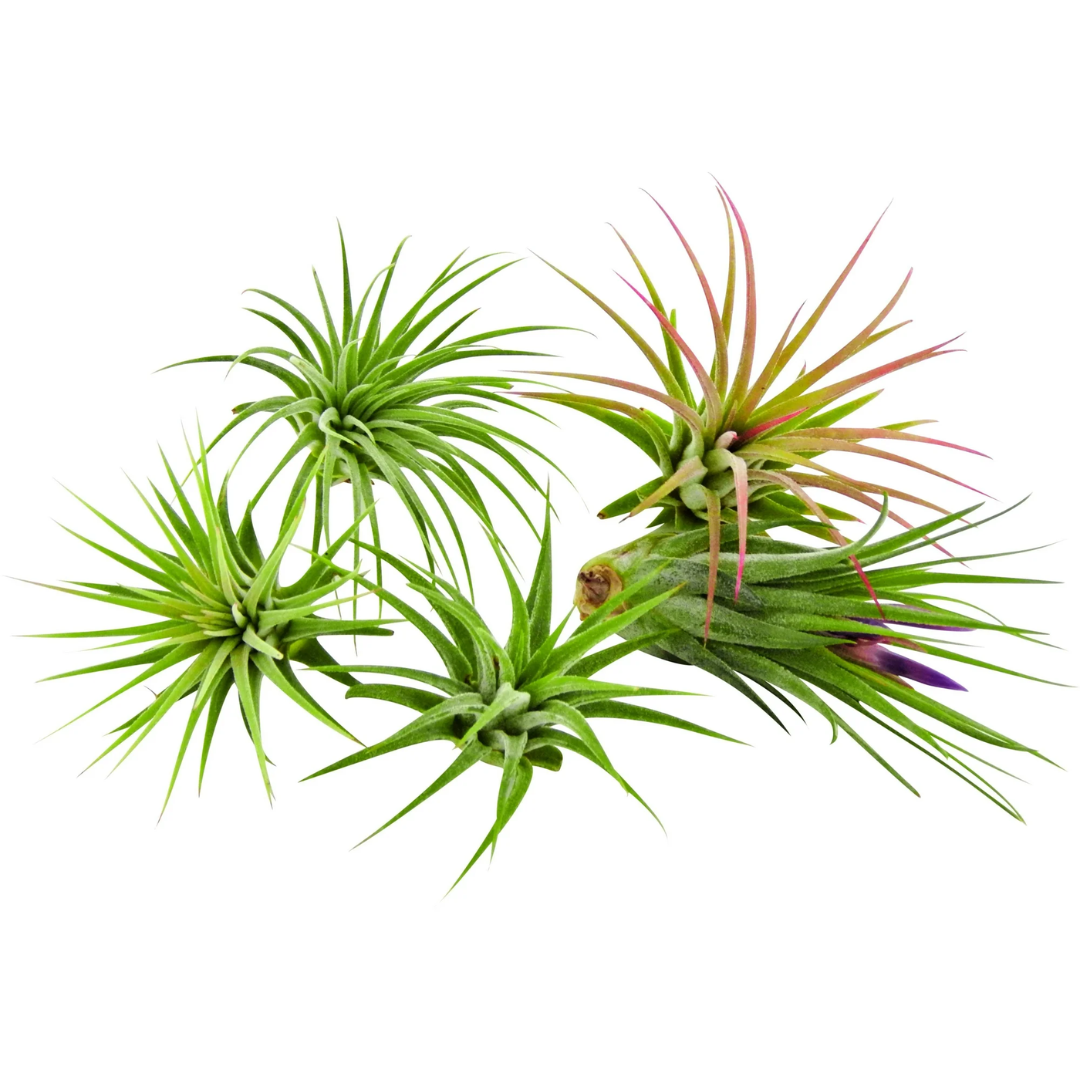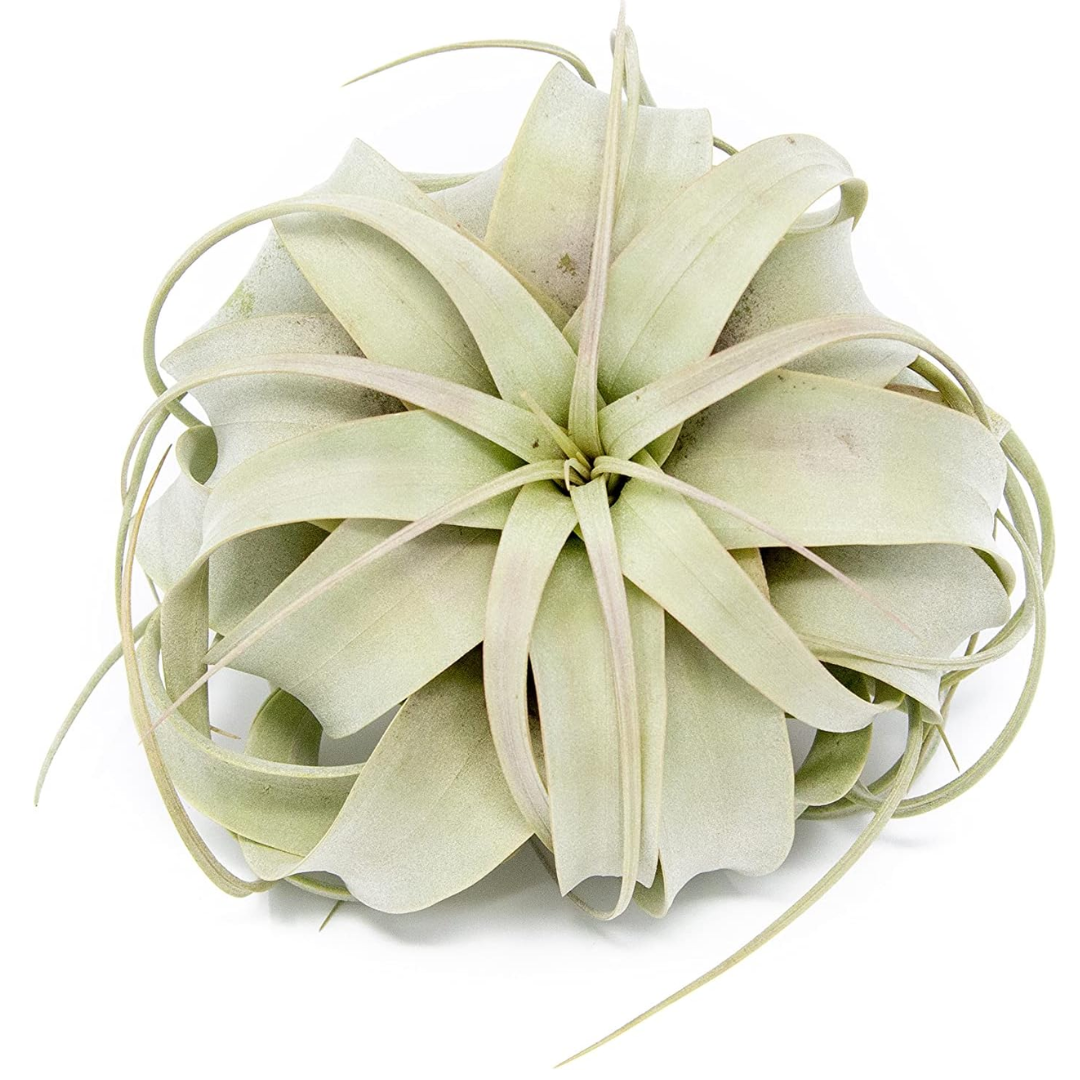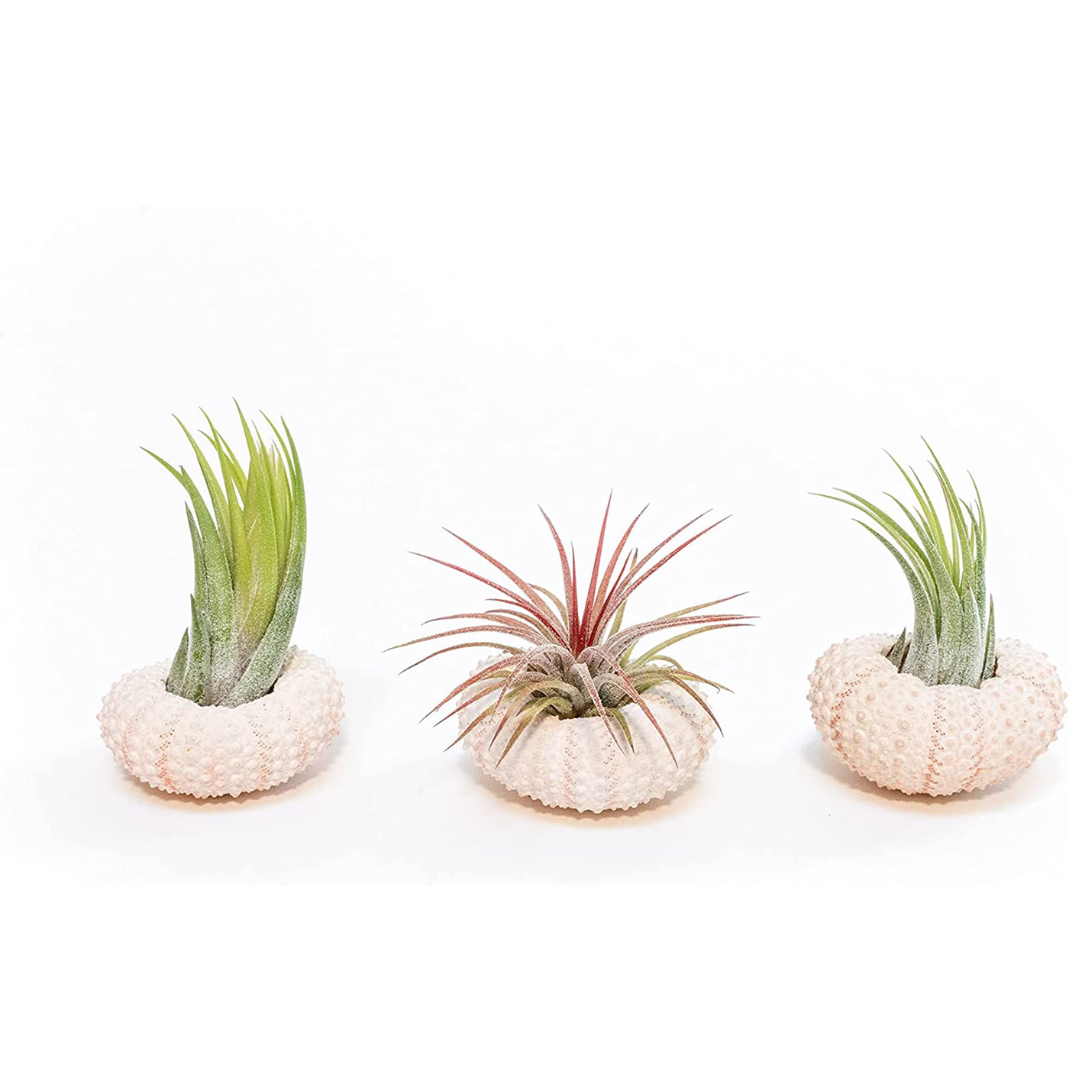How to Water Air Plants — Clever Watering Tips to Help Your Beloved Houseplants Thrive
Expert advice on what you need to do to grow healthy, flourishing plants
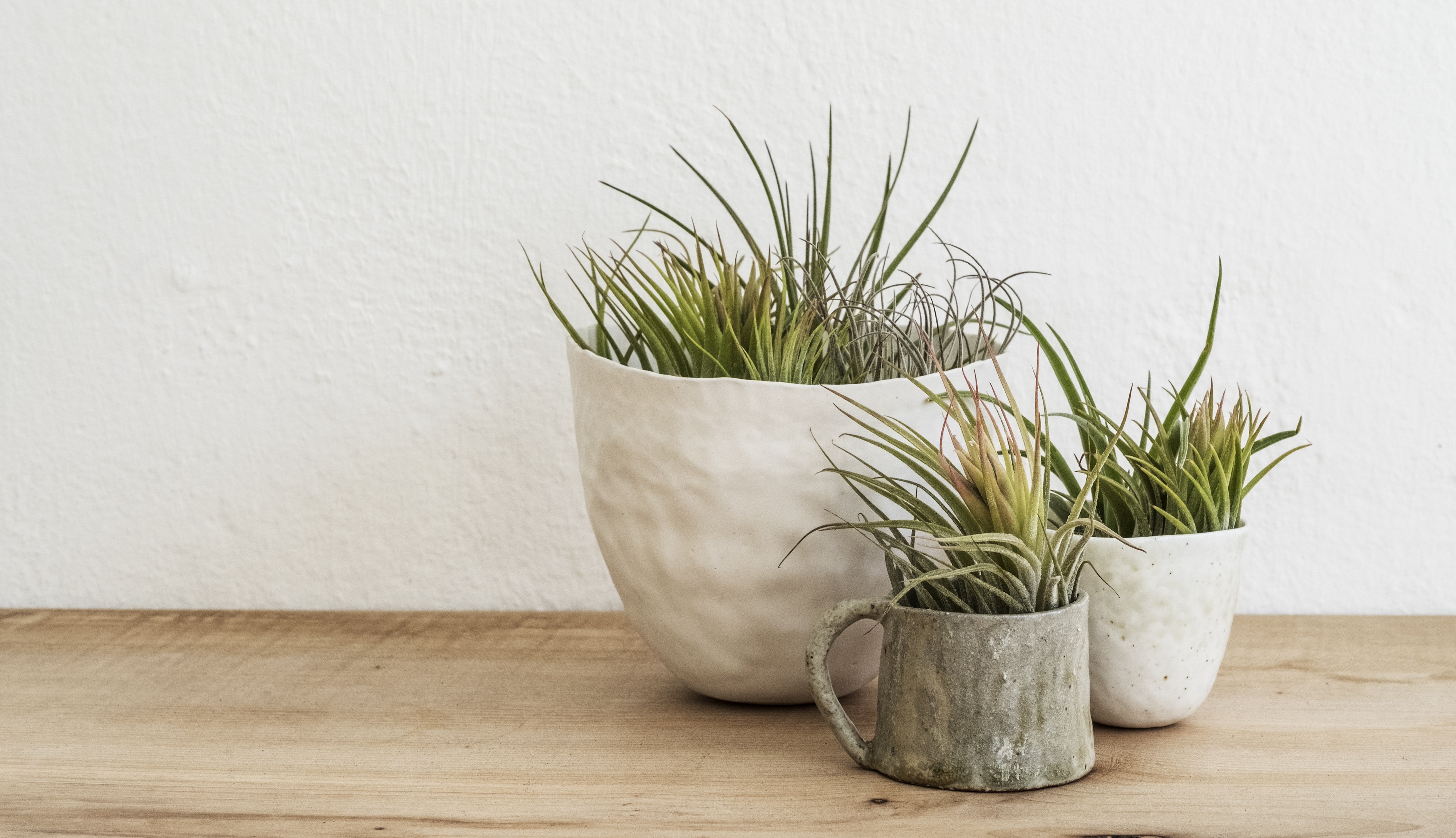
If you've fallen in love with the various varieties of Tillandsia, you'll need to know how to water air plants correctly. These tiny, unusual plants are epiphytes, so they grow on trees in their natural habitat, rather than in soil. This means their care requirements differ slightly from other houseplants.
Not that air plant care is difficult. In fact, ease of care, is as much a part of their appeal, as their cute sizes and interesting looks. There are numerous types of Tillandsia (aka air plants) too, each with slightly differing needs.
There are many ways to display them, too, from ceramic pots to hanging glass orbs and terrariums. With advice from our experts on how to water air plants correctly, you can expect yours to thrive.
How to Water Air Plants?
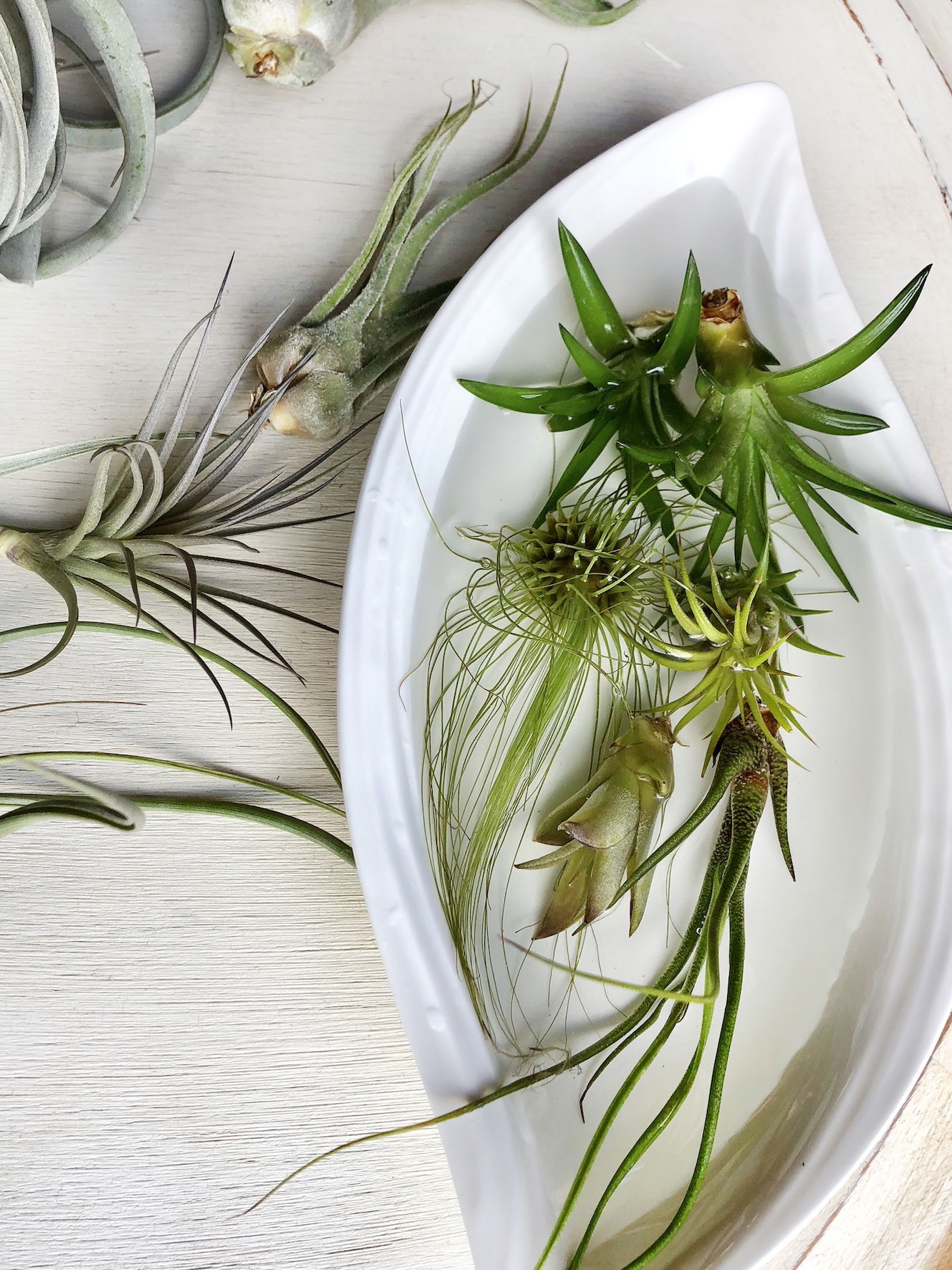
Forget what you know about watering houseplants. Watering air plants is different. These plants don't need soil so there are several ways to hydrate Tillandsia. The correct, or best, way will depend on the type and how you have your air plants displayed.
Most experts recommend removing them from their pots to soak them, or dunk them in water, while others suggest misting them or spraying them with a hose or under a running tap.
Justin Hancock, horticulturalist, Costa farms explains that soaking or dunking air plants is a good way of watering them. "Most Tillandsia have hair-like trichomes that help the leaves absorb moisture—soaking them in a bowl or glass of water can hydrate the plant," says Justin.
"If you want to use this method, you can soak them for about 10 to 20 minutes, then give them a little shake to dislodge any excess water."
The Livingetc newsletters are your inside source for what’s shaping interiors now - and what’s next. Discover trend forecasts, smart style ideas, and curated shopping inspiration that brings design to life. Subscribe today and stay ahead of the curve.
However, Justin highlights that there are other options. "If you don’t want to soak them, you can dunk them in water a couple of times, rather than let them sit and soak. Alternatively, you can come closer to mimicking their natural environments and spray them with running water from the tap to moisturize them.
Jamie Beck, plant expert, Air Plant Design Studio recommends soaking green 'mesic' types, such as Tillandsia ionantha, aeranthos, capitata, bracyhcaulous, while dunking is better for air plants that are accustomed to drier conditions, such as the duratii, streptophylla, xerographica and other 'zeric' varieties.
"When dunking, submerge your air plant in water a few times, letting it get fully wet, then gently shake out any excess water," says Jamie. "Let the plant dry upside down for a few hours, before returning it to its planter.
"Spraying air plants is popular with collectors and growers with large amounts of air plants, when soaking or dunking becomes impossible," adds Jamie. "Misting is a good way to give your air plants extra moisture, in between soaking or dunking."
How Often Should You Water Air Plants?
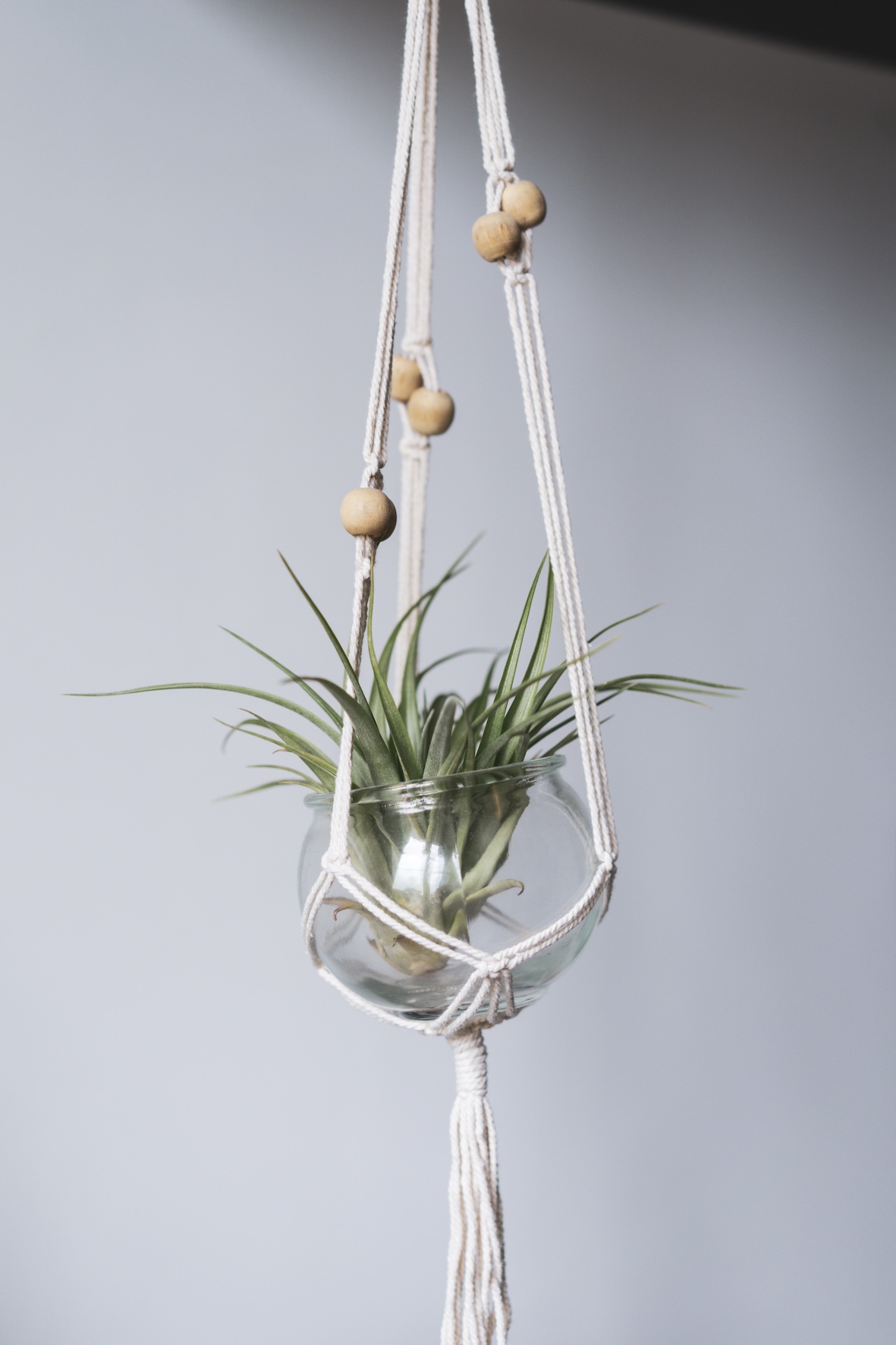
How often you should water houseplants depends on the environment and the type of plant. Whether it's displayed near a window or radiator, summer or winter will have a bearing. As a general guideline, a weekly watering is good for many Tillandsia.
"Soak air plants once a week in tepid water, for up to 30-minutes," says Lisa Eldred Steinkopf, author, Houseplants. "Drain them upside down for a short while, then return them to their growing area. Tillandsia naturally grow on an angle, so water never sits in the middle of the plant. If it does, the plant may rot and fall apart. Like any plant, the more light they receive, the more water they will use."
"It is important to remember that Air Plant is a general category, and there are loads of different varieties with their own moisture preferences," says Justin. "Depending on their native habitats and other factors, some may want to be watered more frequently than others, so check them first."
As for signs of dehydration, Jamie tells us these "include wrinkles and leaves that curl inwards." He suggests you "take a note of how your plants look before and after hydrating them. Then it's easier to monitor them and notice when they need hydrating."
What Time of Day Should You Water Air Plants?
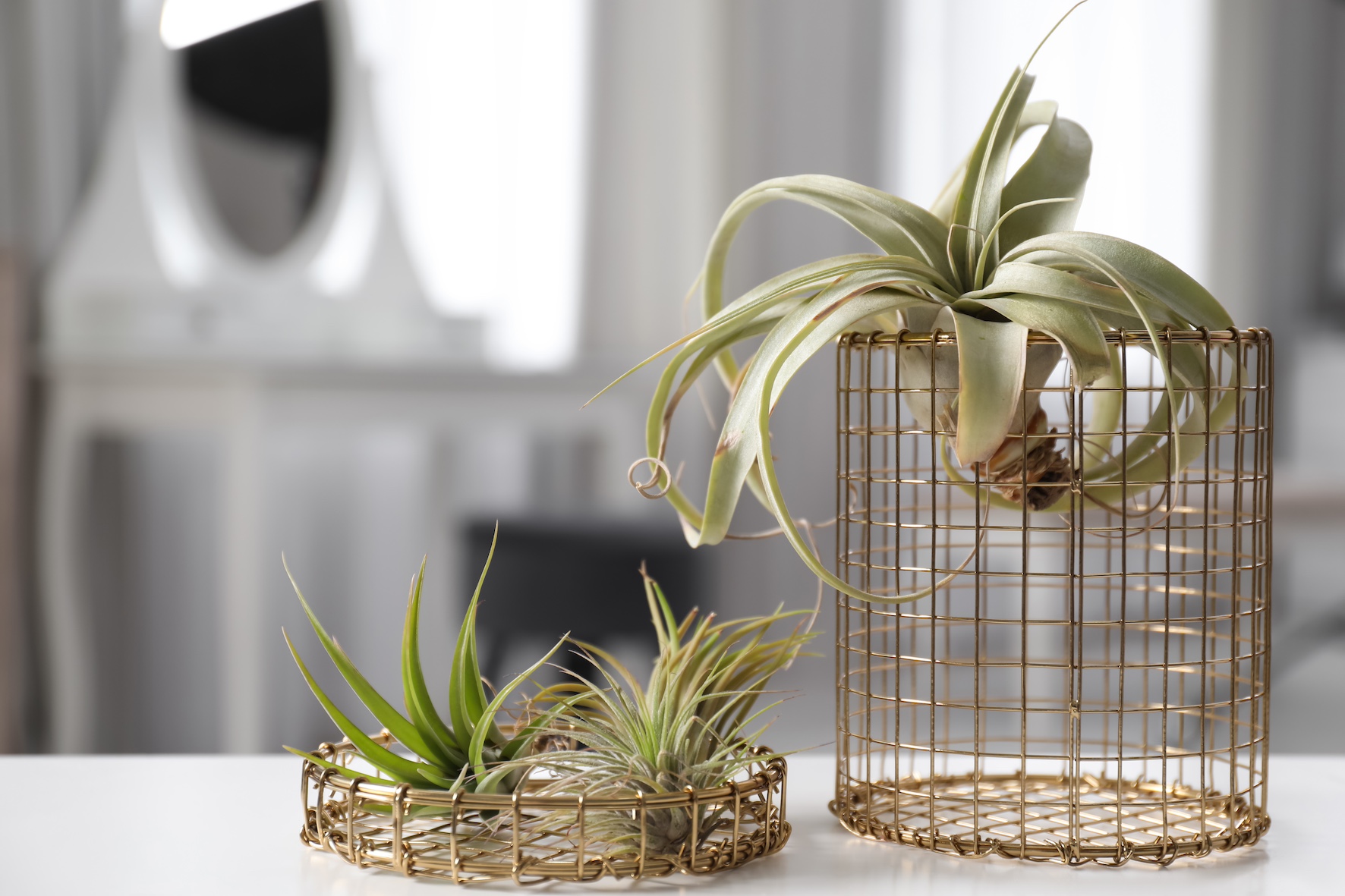
Due to the way that Tillandsia photosynthesis, the optimum time to water them is in the morning.
"Watering Tillandsia in the morning gives them the whole day to absorb and store the water," says Megan Richards, plant expert, Air Plant Design Studio. "Being dry allows them to respire at night. We wouldn't water them or leave them to soak overnight."
What Is the Best Water for Air Plants?
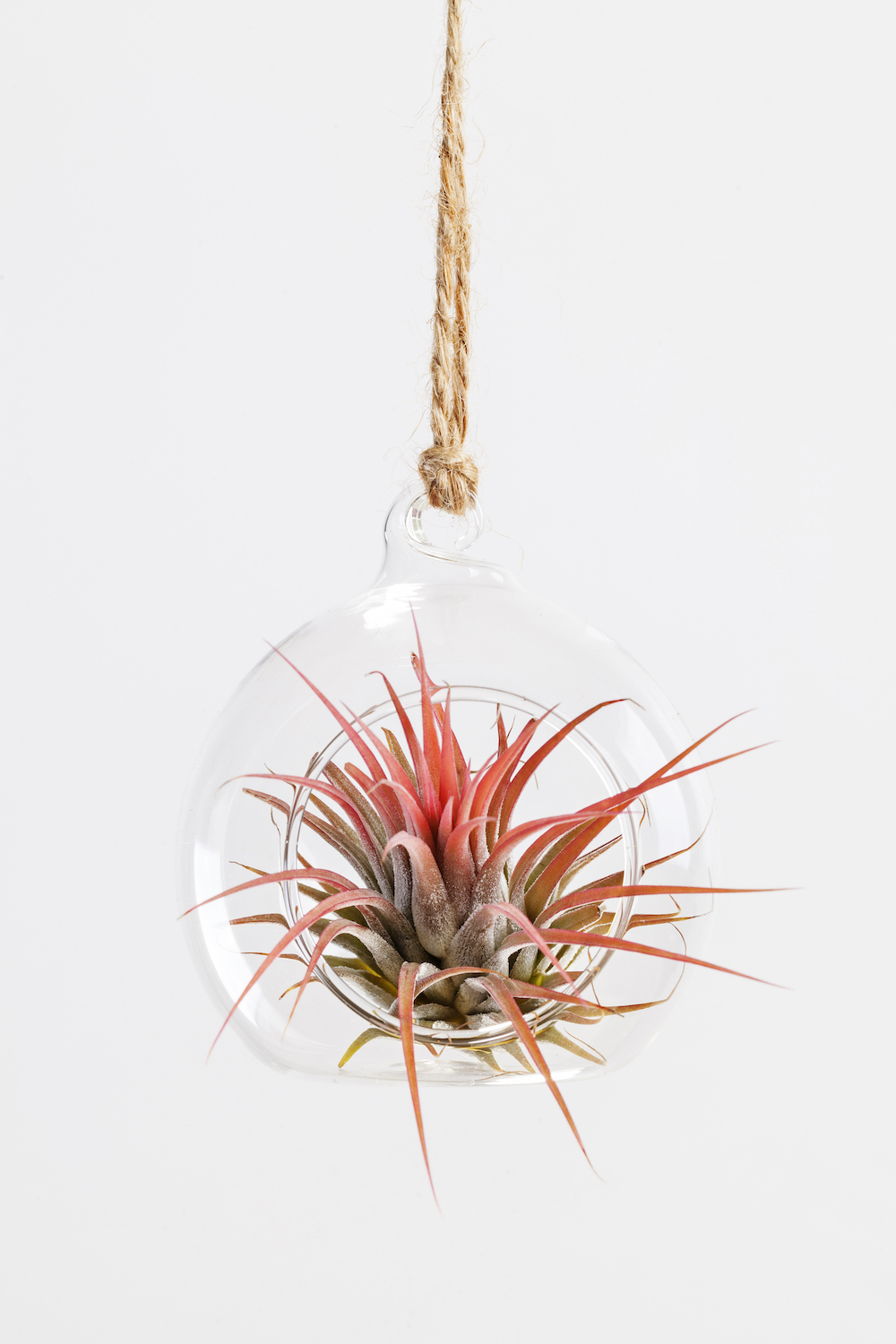
There is much debate about the type of water to give plants. Rain water is obviously what wild plants are adapted to, but tap water is suitable for Tillandsia. Unless you have either extremely hard or soft water, in which case, filter it before using it on your air plants.
"You can use pretty much any type of water you want," says Justin. "Tap water, rainwater, bottled water, are all suitable."
"Tap water is fine, as long as its chemical content isn't high," adds Lisa.
"Rain water or pond water are preferred by air plants but tap water works too," says Jamie. "Just steer clear of softened water. Tillandisa don't appreciate the high salt content. Generally, we advise letting tap water sit for a few hours, so that chemicals like chlorine can dissipate before you water your air plants. Although, be aware that chloramine will not dissipate and would need to be filtered out."
FAQs
What is the lifespan of an air plant?

"Air Plant lifespan varies based on variety and, of course, growing conditions," says Justin Hancock. "Presuming you have pretty good growing conditions, it can range from a year or two to more than a decade.
"Most Air Plants will decline after they bloom but that doesn’t mean the plant is a goner after the flowers fade. Depending on the variety, they can continue to survive for months to years after flowering. They also sprout offshoots, called pups, which can be propagated. Generally, you can enjoy your Air Plants for a few years."
Do air plants need fresh air to grow?
All plants need oxygen to survive, so yes air plants need fresh air to grow. Many Tillandsia will thrive in terrariums due to the humidity created. However, ensure your terrarium has an open side for ventilation.
"In general, most Air Plants are fine in glass baubles or terrariums as long as they’re not completely sealed closed," says Justin Hancock. "Some fresh air is helpful to the plants.
"As long as there’s an opening in the container and you don’t keep it stopped up all the time, it should be fine for most Air Plant varieties (depending on other conditions, of course)."
Jacky Parker is a freelance lifestyle journalist and writer, producing a wide range of features for magazines and digital platforms. She has written for Livingetc and its sister titles, Homes & Gardens and Country Homes & Interiors for more than 15 years, both as a freelance contributor and as Acting Digital Editor and Acting Style Content Editor, regularly reporting on the latest interiors, gardens and wellness inspiration, speaking to experts in their respective fields, and discovering the best tips.
Jacky has also written for other publications, including Sunday Times Style, The Telegraph, Architectural Digest, House Beautiful, ELLE Decoration, Red, Grand Designs and more.
